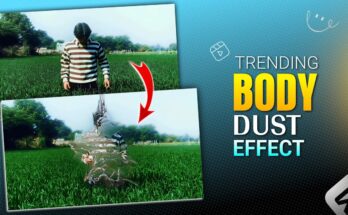Fire animations Intro make for eye-catching, high-energy video intros that capture viewers’ attention instantly. CapCut, with its array of creative tools, offers a great platform for creating such dynamic animations even if you’re a beginner or intermediate user. In this guide, we’ll walk through the steps to craft a custom fire animation intro in CapCut, focusing on effects, keyframes, overlays, sound effects, and refining touches to make the fire intro look authentic and engaging.
1. Understanding Fire Animations and Planning Your Intro
Before diving into CapCut, it’s essential to visualize what you want your intro to convey. Fire animations can suit various themes—from intense action scenes to dramatic transitions or energetic openers for gaming, vlogs, and lifestyle content.
Here are some questions to help plan:
- What’s the tone of your intro? Dramatic, energetic, or mysterious?
- Where will the fire appear? Will it burn in the foreground, engulf text, or transition between scenes?
- What colors and sounds match the fire effect? Warm tones, crackling sounds, and embers add authenticity.
Example Concept: Imagine a slow zoom-in on your brand name, which suddenly catches fire and transforms into glowing, fiery text. Sparks fly, the fire blazes, and then dies down to reveal the next scene or content.
2. Setting Up Your Project in CapCut
Now that you have a concept, let’s start in CapCut:
- Open CapCut and create a new project. Select the video dimensions that match your platform requirements (16:9 for YouTube, 9:16 for Instagram Stories, etc.).
- Import any background footage if you’re working with a video or image as the backdrop. Alternatively, a plain black or dark background often makes fire animations pop.
- Add Text or Graphics: If your intro includes text (e.g., your logo or brand name), add this now. Go to the Text tab, type your desired text, and style it according to your brand.
- Font Selection: Choose bold fonts that stand out, as they’ll be more visible when the fire effect is applied.
- Color and Outline: Consider using contrasting colors, like white or light gray, to make the fire effect more dramatic.
3. Adding Fire Animation Effects
CapCut’s built-in effects and overlay options make creating fire animations straightforward. Here’s how to apply and customize the fire effect:
Step 1: Add Fire Overlays
- Go to the Effects tab in CapCut.
- Search for “Fire” effects. CapCut offers various fire animations, such as blazing, flickering, or sparking effects. Choose one that fits your concept.
- Drag the fire effect onto your timeline, placing it above the text layer to create the illusion that the fire is “burning” the text or image.
Step 2: Customize the Fire Effect
- Adjust the duration of the fire effect by dragging its edges to align with the timeline.
- Tap on the fire effect in the timeline to open customization options:
- Opacity: Lowering the opacity gives a more subtle fire glow, while full opacity creates an intense blaze.
- Blending Modes: Experiment with “Overlay” or “Screen” blending modes to make the fire look like it’s merging with the text rather than covering it.
- Size and Position: Resize and position the fire effect to suit your text or image.
Step 3: Layer Multiple Fire Effects
Using several types of fire overlays enhances realism:
- Duplicate the fire layer and change its position or size.
- Stagger the starting points slightly for each layer to create a layered flame effect.
- For added realism, consider adding a few ember or spark effects at the edges or background to mimic the natural look of fire.
4. Using Keyframes for Smooth Animation
Keyframes are essential for creating smooth transitions and dynamic movement in CapCut. Here’s how to use keyframes effectively:
Step 1: Animating Fire’s Position and Scale
- Select the fire overlay layer, then tap Keyframe to add the first keyframe at the starting point.
- Move the playhead forward slightly and add another keyframe.
- Scale or reposition the fire effect for each keyframe so the flames appear to flicker and grow.
- Position Keyframes: Make the fire move slightly up or sideways to mimic wind or flickering.
- Scale Keyframes: Gradually increase or decrease the fire size, creating a natural blaze effect.
Step 2: Animating Text or Image with Fire
- Select the text layer, add a keyframe at the point the fire effect begins.
- Move forward in the timeline and adjust opacity or size to create a fade-out or shrink effect, making it appear as though the fire is “burning” away the text.
- You can also animate the text’s color—start with a lighter color, then switch to a darker tone for a burnt look.
5. Enhancing the Fire Animation with Overlays
Overlays, like embers and smoke, add layers of realism to your fire animation. CapCut provides several overlay options:
Step 1: Adding Smoke Effects
- Go to Overlays and look for smoke or mist effects.
- Place the smoke overlay layer just above or behind the fire effect layer to make it look like smoke is rising from the fire.
- Adjust the opacity and blend mode to make the smoke appear lighter and realistic.
Step 2: Adding Spark Overlays
- In the Effects section, locate and add a spark or ember effect.
- Use keyframes to make the sparks “fly” upward, adding a touch of natural realism.
- Keep these effects subtle, as too many overlays can make the animation look crowded.
Step 3: Adding a Color Filter
- To enhance the fire’s intensity, try adding a warm color filter to the entire animation. Go to Adjust and increase the Temperature for warmer tones or Vibrance to make colors pop.
6. Adding Sound Effects for Realism
Sound effects make a massive difference in bringing your fire intro to life. Here’s how to integrate sound effectively:
- Find Fire Sound Effects: CapCut’s audio library may have fire and crackling sounds. Search for “fire,” “burning,” or “crackling” effects, or import sound effects from a royalty-free library.
- Place the Sound Layer: Position the sound effect layer to align with the fire animation’s start and end.
- Adjust Volume and Fade: Tap on the audio layer and reduce the volume to fit with the visuals. Use fade in and fade out settings to blend the sound seamlessly with the video.
- Tip: You can layer multiple sound effects, such as crackling, roaring flames, and subtle wind sounds for depth and immersion.
7. Polishing and Exporting Your Final Animation
Once you’re happy with the animation, take a moment to review each element. Look for any rough edges or abrupt transitions, as well as color and timing tweaks to make the fire animation look polished.
Step 1: Fine-Tune Color and Lighting
- Use CapCut’s Adjust feature to modify contrast, brightness, and saturation.
- A slight boost in contrast and sharpness often makes fire effects look crisper against dark backgrounds.
Step 2: Use Transitions for a Seamless Intro
If this fire animation intro will lead into another clip or content, consider adding a smooth transition:
- Go to the Transitions tab and experiment with fade-in or fade-out effects to seamlessly blend your intro with the next segment.
Step 3: Final Playback and Export
- Play back the entire animation, paying close attention to synchronization between visuals and audio.
- When satisfied, export the video. CapCut offers multiple resolution settings; aim for high-definition (HD) to keep your animation crisp, especially for larger platforms like YouTube.
Downlaod
Conclusion
Creating a fire animation intro in CapCut is all about combining effects, keyframes, overlays, and sound to achieve a dynamic, professional look. By following these steps and experimenting with CapCut’s features, you’ll be able to craft unique fire intros that captivate viewers from the first second.
Pro Tips and Tricks
- Experiment with Multiple Keyframes: Keyframes allow infinite creativity with movements, rotations, and opacity changes. Don’t be afraid to add additional keyframes for smoother, more complex animations.
- Layer Different Fire Effects: Mixing various fire overlays with different opacity and sizes can simulate natural fire flicker and randomness.
- Add Shadows for Depth: If your animation includes text or graphics, try adding a subtle shadow for a more 3D effect.
CapCut’s simplicity and diverse feature set make it a valuable tool for creating stunning, professional-quality fire animation intros. As you continue experimenting and adding your own creative flair, you’ll find new ways to enhance your intros, building your skills in animation and video editing along the way. Enjoy crafting your fiery masterpiece.
For more useful Article keep visit Puletech


